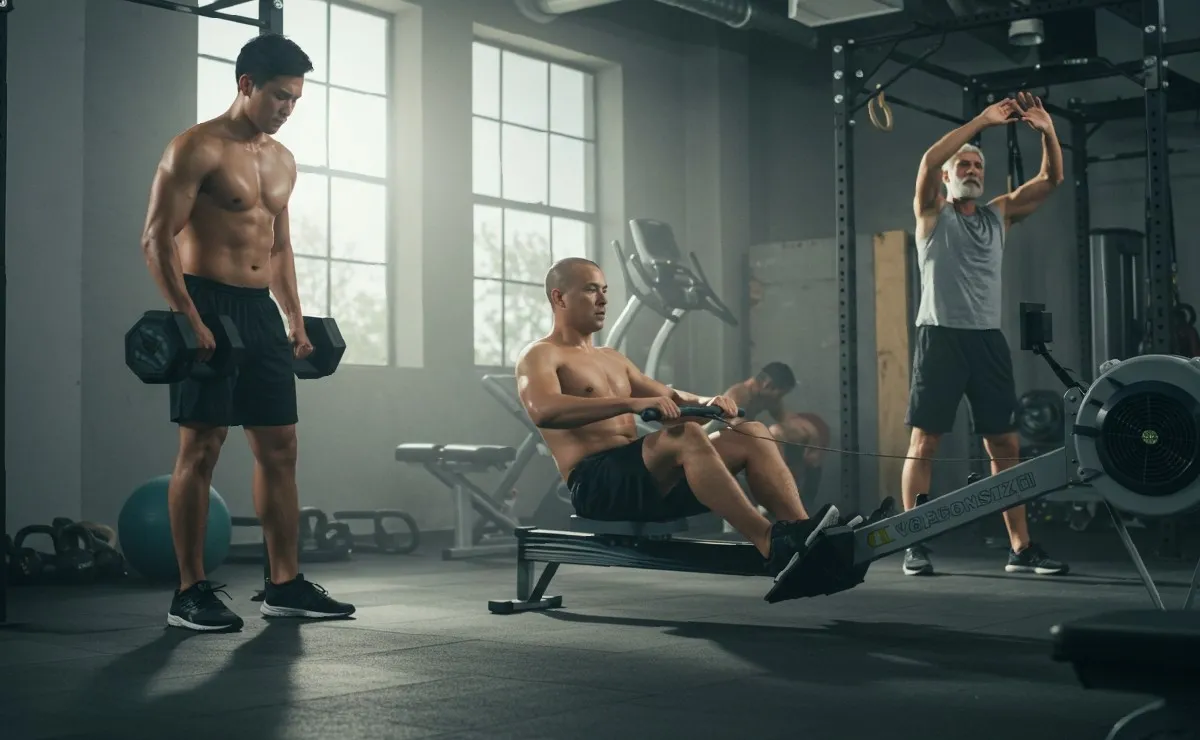Male performance goes beyond aesthetics; it’s a holistic pursuit of strength, endurance, and overall well-being.
Achieving a robust and functional physique requires a well-defined strategy that integrates intelligent training, precise nutrition, and, occasionally, safe, evidence-based supplementation.
This path isn’t about shortcuts, but rather consistency, patience, and a deep understanding of how the male body responds to the right stimuli.
For building muscle mass, known as hypertrophy, the key lies in the principle of progressive overload.
This involves gradually increasing the demand on your muscles over time, whether through more weight, more reps, more sets, or increased frequency.
Most recommended exercises
Compound exercises, such as squats, deadlifts, bench presses, and rows, should be the foundation of any routine, as they engage multiple muscle groups and stimulate a greater hormonal response. A range of 6 to 12 repetitions per set, with adequate total volume, is typically optimal for hypertrophy.
Endurance, on the other hand, is vital for cardiovascular health, athletic ability, and recovery. Including cardiovascular training, both low-intensity long-duration (LISS) and high-intensity interval training (HIIT), is essential.
LISS improves aerobic efficiency and recovery, while HIIT boosts anaerobic capacity, speed, and fat burning. Periodization of training is crucial to avoid overtraining and allow the body to continually adapt and improve.
Integrating strength and endurance without compromising progress in either area can be challenging, but it’s entirely possible. An effective strategy is to separate strength and endurance training sessions on different days, or at least several hours apart.
Prioritizing strength before cardio in the same session can also be beneficial for maximizing weightlifting performance. The key is to listen to your body and adjust the volume and intensity to allow for proper recovery.
No training program is complete without proper nutrition. Diet is the cornerstone of building muscle, improving endurance, and recovery. A positive energy balance (consuming more calories than burned) is necessary for gaining muscle mass, while a slight deficit can be helpful for definition. However, the quality of calories is just as important as the quantity.
Protein is the star macronutrient for muscle repair and growth. A daily intake of 1.6 to 2.2 grams of protein per kilogram of body weight, spread over several meals, is recommended.
Carbohydrates are the main source of energy for training and recovery; opting for complex carbohydrates like oats, brown rice, and potatoes is ideal. Healthy fats, from avocados, nuts, and vegetable oils, are essential for hormone production and overall health.
As for supplementation, it should be viewed as a complement to a solid diet and training, not a substitute.
Some safe, science-backed supplements include creatine monohydrate, which improves strength and power; whey protein, which helps meet daily protein requirements and speeds recovery; caffeine, which can improve performance and focus; and omega-3 fatty acids, which are beneficial for cardiovascular health and reducing inflammation. It’s crucial to consult a healthcare professional or nutritionist before starting any supplementation regimen.
Ultimately, recovery and lifestyle are just as important as training and nutrition. Getting seven to nine hours of quality sleep per night is critical for muscle repair and hormonal optimization. Proper hydration, stress management, and actively listening to your body’s signals are essential components for sustained male performance and optimal long-term health.
Consistency across all of these pillars is what truly paves the way for all-around male performance.























+ There are no comments
Add yours